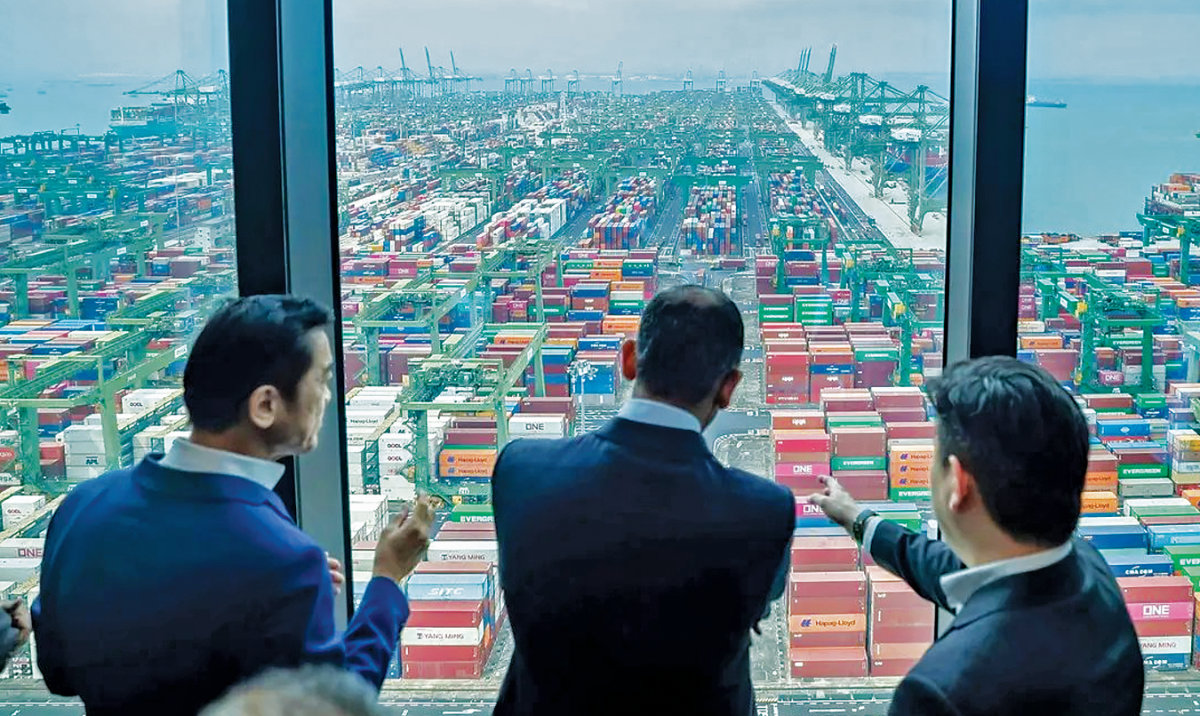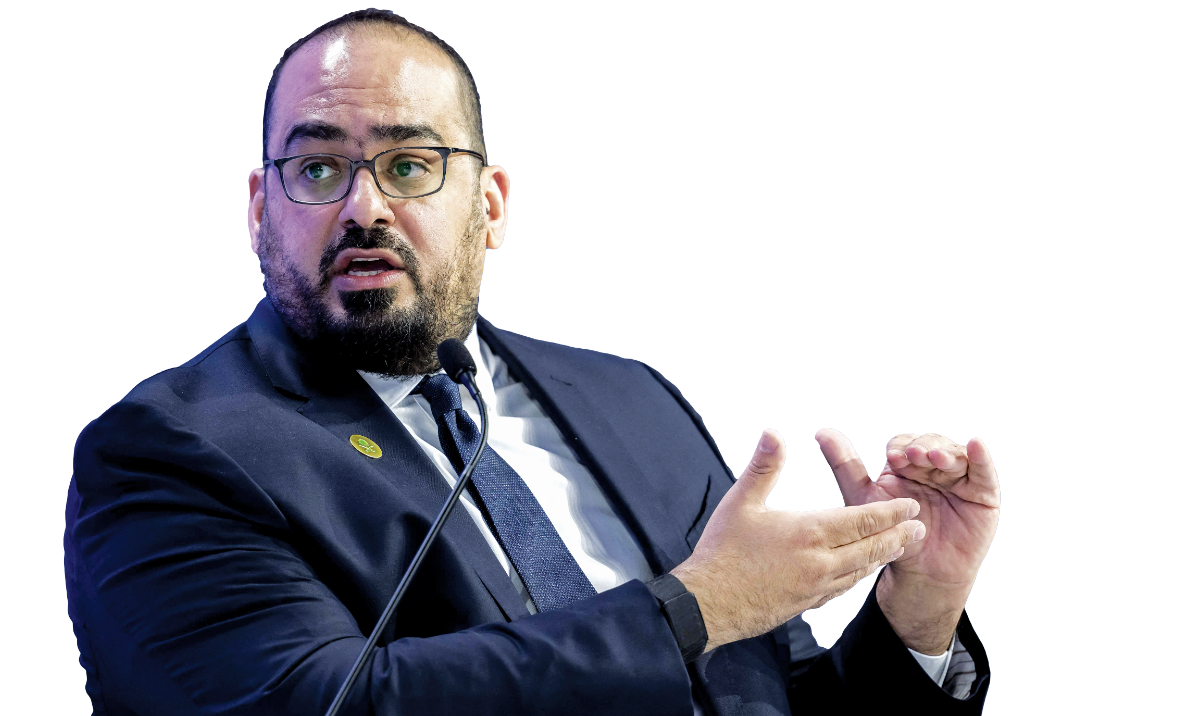RIYADH: The UAE was the leading destination for Saudi Arabia’s non-oil exports in November, with outbound shipments to the Emirates reaching SR7.17 billion ($1.87 billion) in what was a 22.35 percent month-on-month rise.
According to the General Authority for Statistics, the Kingdom exported machinery and mechanical appliances valued at SR3.15 billion to the UAE in November, followed by transport parts and precious metals at SR2.03 billion and SR404.7 million, respectively.
In October, Saudi Arabia’s non-oil shipments to the UAE amounted to SR5.86 billion, while it was SR6.54 billion and SR6.78 billion in September and August, respectively.
Saudi Arabia also exported plastic and rubber products worth SR330 million in November, while outbound shipments of chemical products totaled SR319 million.
Strengthening the non-oil sector is one of the crucial goals outlined in Saudi Arabia’s Vision 2030 agenda, as the Kingdom is steadily diversifying its economy by reducing its dependence on crude revenues.
Affirming the growth of Saudi Arabia’s non-oil private sector, the Kingdom’s Purchasing Managers’ Index reached 58.4 in December, marking a slight decline from a 17-month high of 59 in the previous month, according to the Riyad Bank Saudi Arabia PMI survey compiled by S&P Global.
Any PMI readings above 50 indicate growth of the non-oil private sector, while readings below the number signal contraction.
Underscoring the progress of Saudi Arabia’s non-energy sector, the Kingdom’s PMI has remained above the 50 growth mark continuously since September 2020.

China held the third spot for Saudi Arabia’s non-oil exports. (SPA)
Saudi Arabia’s PMI in December is also the highest among its Middle East neighbors.
The Kingdom’s Arab neighbors UAE posted a PMI of 55.4 in December, with Kuwait registering 54.1, and Qatar on 52.9.
Speaking at the World Economic Forum in Davos earlier this month, Saudi Arabia’s Finance Minister Mohammed Al-Jadaan said that the Kingdom’s commitment to economic diversification under Vision 2030 was driving steady growth, with the growth of non-oil gross domestic product being prioritized over traditional oil revenues. India was another major destination for Saudi Arabia’s non-energy goods in November, with exports amounting to SR2.52 billion, representing a 19.43 percent increase compared to the previous month. GASTAT revealed that Saudi Arabia exported chemical products worth SR1.34 billion, while outbound shipments of plastic and rubber products were valued at SR449.6 million, and base metals amounted to SR324.5 million.
The Kingdom also exported precious stones and metals amounting to SR324.5 million in November to India.
China held the third spot for Saudi Arabia’s non-oil exports, with the Asian giant receiving inbound shipments from the Kingdom valued at SR2.17 billion in November, marking a month-on-month decline of 7.65 percent. Other top destinations for Saudi Arabia’s non-hydrocarbon goods were Singapore, with a value of SR1.23 billion; Turkiye at SR960.4 million, and Bahrain at SR929.7 million.
Egypt received non-energy products amounting to SR868.4 million in November, while exports to the US and Jordan totaled SR772.8 million and SR642.6 million, respectively.
Overall, Saudi Arabia’s non-oil exports witnessed an annual rise of 19.7 percent in November, reaching SR26.92 billion.
Speaking at the World Investment Conference in November, Saudi Arabia’s Minister of Economy and Planning Faisal Al-Ibrahim said that non-oil activities account for 52 percent of the Kingdom’s gross domestic product.

Saudi Minister of Economy and Planning Faisal Al-Ibrahim said non-oil activities account for 52% of KSA’s GDP. (AFP)
The minister added that the Kingdom’s non-oil economy has been growing at 20 percent since the launch of the Vision 2030. In November, Saudi Arabia exported non-energy goods worth SR16.76 billion via sea, while outbound shipments via land and air totaled SR4.99 billion and SR5.17 billion, respectively.
King Fahad Industrial Sea Port in Jubail was the main exit point for Saudi Arabia’s non-hydrocarbon products with goods valued at SR3.39 billion.
Jeddah Islamic Sea Port and Jubail Sea Port also handled outbound shipments worth SR3.35 billion and SR1.91 billion, respectively.
In terms of exit points via land, Al Bat’ha Port handled goods valued at SR1.85 billion, while products worth SR696.4 million passed through Al Hadithah Port.
Among airports, King Khalid International Airport in Riyadh handled outbound shipments worth SR2.79 billion, while King Abdulaziz International airport processed non-energy goods amounting to SR1.99 billion.
In December, a report released by Mastercard Economics also underscored the robust expansion of Saudi Arabia’s non-oil activities.
The analysis said that the Kingdom’s GDP is expected to witness an expansion of 3.7 percent year on year in 2025, driven by a rise in the Kingdom’s non-oil activities.
The Mastercard report added that economic diversification efforts in the Kingdom will continue in 2025 as the government leverages strong balance sheets to finance investment in infrastructure.
Overall merchandise exports
GASTAT revealed that Saudi Arabia’s overall merchandise exports witnessed a decline of 4.69 percent in November 2024 compared to the same month in 2023, reaching SR90.54 billion.
The authority said this fall in overall exports was due to a 12.3 percent decrease in oil exports.
“Consequently, the percentage of oil exports out of total exports decreased from 76.3 percent in November 2023 to 70.3 percent in November 2024,” said GASTAT.
In November, Saudi Arabia’s overall merchandise exports to China stood at SR13.53 billion, followed by Japan at SR8.93 billion, the UAE at 8.75 billion and India at SR8.74 billion.
The flow of Saudi exports to China signifies strong bilateral relations between both nations, with the Kingdom being the largest trading partner of China in the Middle East since 2001.
The Kingdom and Saudi Arabia are also strategic partners in various other sectors like energy and finance, as well as the Belt and Road Initiative.
South Korea received goods worth SR8.34 billion in November, while the Kingdom’s exports to the US stood at SR3.72 billion, to Singapore at SR3.34 billion, and SR2.85 billion going to Malaysia.
Imports in November
According to GASTAT, Saudi Arabia’s overall imports in November were valued at SR73.65 billion, marking a rise of 13.9 percent compared to the same month in the previous year.
Saudi Arabia imported goods worth SR20.11 billion from China, led by mechanical appliances and electrical equipment valued at SR9.99 billion.
The Kingdom also imported transport equipment and base metal products amounted to SR2.56 billion and SR1.89 billion, respectively.
China was closely followed by the US and UAE with the Kingdom welcoming goods from these nations valued at SR7.52 billion and SR3.90 billion, respectively in November.
The Kingdom also imported goods worth SR3.22 billion from Germany and SR3.14 billion from India.
Japanese imports to Saudi Arabia amounted to SR2.83 billion, while inbound shipments from Italy and Switzerland stood at SR2.58 billion and SR2.40 billion, respectively.
According to GASTAT, imports worth SR44.25 billion entered Saudi Arabia via sea, while inbound shipments valued at SR20.47 billion and SR8.65 billion came via air and land, respectively.
King Abdulaziz Sea Port in Dammam was the primary entry point for goods in September through sea in November, with imports valued at SR18.19 billion, representing 24.7 percent of the total inbound shipments.
The authority added that Jeddah Islamic Sea Port handled incoming shipments valued at SR17.58 billion, followed by Ras Tanura Sea Port at SR3.24 billion.
Through land, Al Bat’ha Port and Riyadh Dry Port processed incoming goods valued at SR3.89 billion and SR2.66 billion, respectively.
Through air, King Khalid International Airport in Riyadh welcomed inbound shipments worth SR10.94 billion in November.
King Abdulaziz International Airport and King Fahad International Airport also handled imports valued at SR5.11 billion and SR4.27 billion, respectively.






















